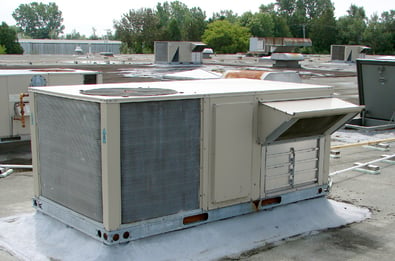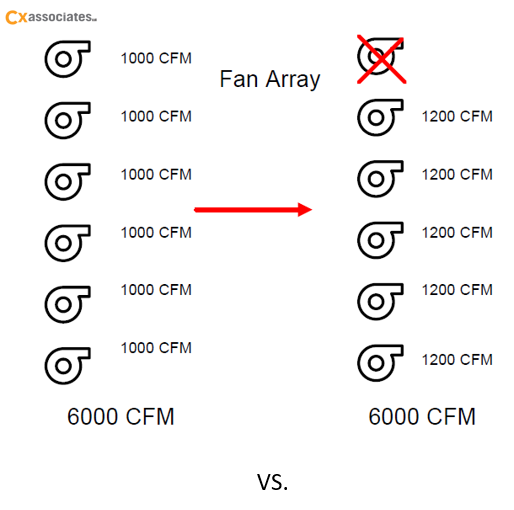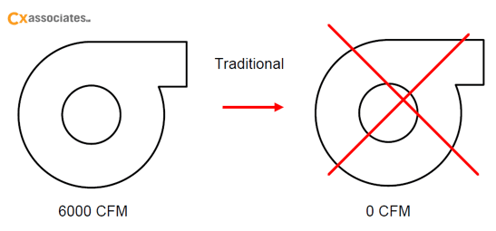On a recent project at a large hospital Cx Associates examined the feasibility of consolidating two air handlers into one single air handler. One of the air handlers is nearing the end of its useful life, and is the reason this project was brought to Cx Associates. While making an in-kind replacement was looked at, the replacement of this air handler presented an opportunity to replace another that was also aging, and located in a position that would be difficult to replace in the future. By combining the two air handlers into a single air handler there was an opportunity to essentially upgrade two air handlers at once at a lower cost than replacing them individually at different times. Maintenance advantages can also be realized by reducing the number of air handlers to maintain in the facility by one.

Maintaining Redundancy with Just One AHU
One of the concerns of consolidation the hospital staff had was that if the air handler fails, they would lose conditioning of both spaces served by the consolidated air handler. This is in contrast to the current arrangement where, if one air handler fails, they would only lose conditioning to the space that it serves. We suggested using a "fan array" to provide redundancy. By using a fan array for air handler redundancy, we were able to mitigate the issue of fan failure. A fan array utilizes several fans to provide air flow as opposed to using a single fan, and if specified correctly, can provide 100% redundancy. For example, a fan array could consist of six fans. If one of those fan motors fails, the other five would still be able to provide the design airflow while the failed motor is replaced. This satisfied the concerns of the hospital staff, since fans/fan motors are the most common point of failure in an air handler.

Ensuring Codes Are Met
An issue that arose while specifying the new AHU was what the filter requirements were going to be. The code in the area where this project was refers to ASHRAE Standard 170 for indoor air quality requirements in healthcare facilities (as most state or local codes typically do). This standard defines the filter minimum efficiency reporting value (MERV) requirements of air handlers serving healthcare specific spaces. There are different MERV requirements for different space types, and for this project by consolidating the two air handlers we were going to have one air handler that serves varying space types with different filter MERV requirements. ASHRAE 170 does not explicitly state what to do in these scenarios, and while we could have made an assumption, we made a request for clarification on the standard. This clarification has been published on the ASHRAE website and can be viewed here: https://www.ashrae.org/standards-research--technology/standards-interpretations/interpretations-for-standard-170-2013
The clarification will hopefully help those in the future with a similar situation, and states that the most stringent filter requirement is to be used if the space types served fall into more than one space designation category.
These are just a couple of examples of solutions and problem solving that Cx Associates can provide to our clients. For more project examples or to find out more about what Cx Associates can do for your building contact us today!



